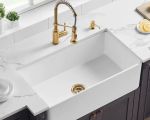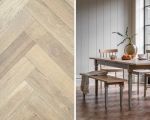- 1-Planning-Your-DIY-Bookshelf
- 2-Materials-And-Tools-Needed
- 3-Step-By-Step-Bookshelf-Construction
- 4-Customizing-And-Finishing-Touches
- 5-Real-Life-DIY-Bookshelf-Success-Stories
- 6-Getting-Support-From-Professionals
1. Planning Your DIY Bookshelf
Creating a functional and attractive bookshelf for your home office begins with careful planning. This initial stage defines the size, style, and purpose of the shelf, helping ensure the finished product fits your space and storage needs perfectly.
1.1 Assessing Your Space and Storage Needs
Measure the area in your home office where the bookshelf will reside. Consider not only the physical dimensions but also the type of items you plan to store—books, office supplies, decorative items, or a mix of these. This will influence shelf height, depth, and the number of compartments.
1.2 Choosing a Design Style
Your bookshelf can be simple and utilitarian or a statement piece reflecting your personal style. From rustic wooden shelves to sleek modern designs, selecting a style early will guide your material choice and construction techniques. This personal touch can transform your office environment.
2. Materials and Tools Needed
Having the right materials and tools is essential for a smooth DIY bookshelf project. Selecting quality materials ensures durability, while the right tools make the building process efficient and enjoyable.
2.1 Recommended Materials
Common materials include plywood, hardwood boards, screws, wood glue, and finishing elements such as paint or stain. For a sturdy bookshelf, choose hardwood or quality plywood with smooth surfaces to avoid excessive sanding.
2.2 Essential Tools
Basic tools like a saw, drill, measuring tape, level, screwdriver, and clamps are typically needed. If you’re new to woodworking, renting or borrowing specialty tools can be a cost-effective option.
3. Step-by-Step Bookshelf Construction
Building your DIY bookshelf can be a rewarding process when broken down into clear steps. Attention to detail during each phase will result in a solid, visually pleasing final product.
3.1 Cutting and Preparing the Wood
Start by cutting your boards to size according to your design plan. Accurate measurements are key—take your time and double-check all cuts. Sand edges to prevent splinters and ensure a smooth finish.
3.2 Assembling the Frame
Assemble the sides, top, and bottom pieces first to form a sturdy frame. Use wood glue and screws for strong joints. Clamps can hold pieces steady as the glue dries. Check for squareness with a carpenter’s square to avoid a crooked shelf.
3.3 Installing Shelves
Attach shelf supports at the desired heights, then secure the shelves themselves. Consider adjustable shelving if flexibility is important. Ensure all shelves are level to prevent items from sliding or tipping.
4. Customizing and Finishing Touches
After basic assembly, customization brings your bookshelf to life and makes it uniquely yours.
4.1 Painting and Staining
Choose a finish that complements your office decor. Paint can add color and personality, while stain highlights the natural beauty of wood grain. Apply primer before paint for longevity.
4.2 Adding Decorative Elements
Consider adding molding, hardware, or LED strip lights to enhance both appearance and functionality. These details can elevate a simple bookshelf into a stylish focal point.
5. Real-Life DIY Bookshelf Success Stories
One inspiring example comes from a remote worker who crafted a custom bookshelf tailored to her small home office. By carefully planning shelf sizes to accommodate both books and decorative plants, she transformed a cluttered corner into an organized, inviting space. The project not only saved her money but also added a sense of accomplishment and creativity to her workspace.
Another story involves a young professional who documented his build process online, sharing tips about overcoming challenges like uneven walls and limited tools. His experience demonstrates how thoughtful adaptation and perseverance can lead to a beautiful, functional bookshelf—even for beginners.
6. Getting Support From Professionals
While building a DIY bookshelf is achievable for many, some aspects—like complex cuts or finishing—may require expert advice or help. For those seeking guidance or looking to purchase high-quality materials and tools, Improvement provides trusted resources and service recommendations. This support can ensure your bookshelf project runs smoothly and meets your expectations.








